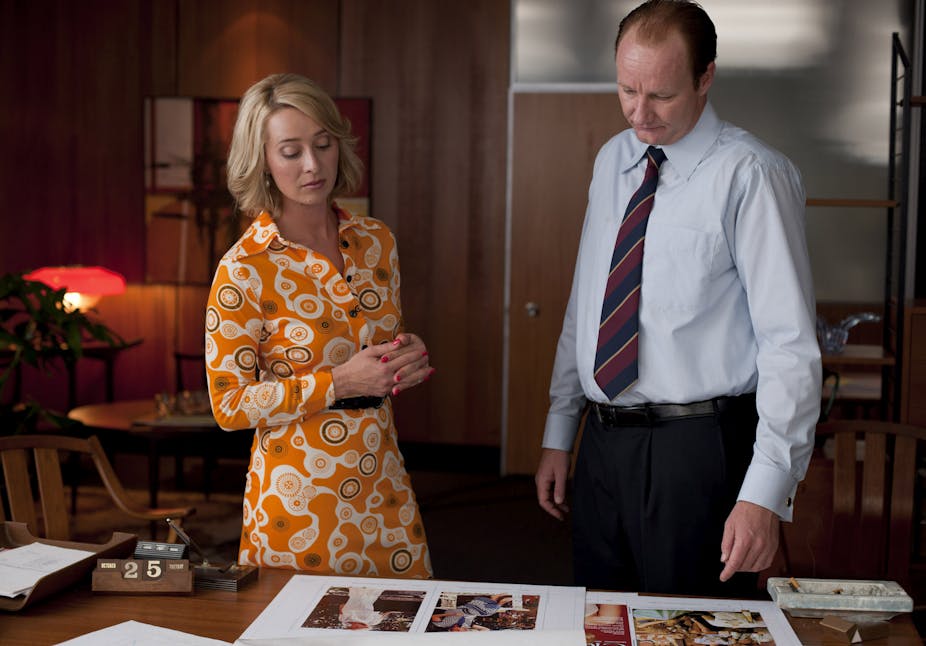Towards the end of the ABC-TV historical drama Paper Giants: The Birth of Cleo,* a party is thrown to celebrate the magazine’s third anniversary.
Cleo had launched in November 1972, the same month that Gough Whitlam came to power in Australia. Three years later, Gough was ousted, and Ita Buttrose, Cleo’s launch editor, was ready to move on to be editor of the Australian Women’s Weekly.
It was a curious double-act – Whitlam attempting to bring a “fair go” to Australians with his version of social democracy, Buttrose giving the “fair go” a feminist spin by translating the ideas of women’s and sexual liberation to her readers, ordinary Australian women.
In the dying embers of the party, one of Cleo’s star feature writers, Anne (Annie) Woodham, says, “Everything’s different now”.
Another journalist chimes in. “Gough changed everything.”
“No,” says Annie, “I mean us. We did. We changed everything.”
“Yes, we did,” Ita replies.
Well, they’d had a bit to drink. While I don’t dispute that Cleo had a huge impact on the lives of the Australian women (and men) who read it, I doubt very much that the editorial team could have been so aware of the influence their magazine had.
It’s the kind of insight a media historian can offer - one, for example, who spent seven years writing a PhD on this very subject – but not an influence you can measure on the ground at the time.
Cleo was not like any magazine Australian women had seen before. It was loosely modelled on Cosmopolitan – in fact it should have been Cosmopolitan, but the licence from the American publisher Hearst was given, at the last minute, not to Packer’s ACP but to Sungravure. (And here Paper Giants gets it wrong – the program states the licence went to Fairfax. But hey, that would be a rare moment of dramatic licence in a production that was historically pretty accurate.)
Cleo was politically provocative with its journalism, and I use politics here in its broadest sense. This magazine’s readers may have had the right to vote, but Cleo challenged its readers to think about the political rights that, dare I say, mattered far more to them.
Why, Cleo asked, did most Australian women in the early seventies still have less education (most had not finished high school), and visions of a life that involved early marriage (on average at 21), children (at 23), part-time work for “housekeeping” money, domestic violence and sexual harassment as the great unspoken? A life that involved dangerous abortions or forced adoptions if single and pregnant, and, as Buttrose herself experienced, bank managers who refused single women a loan, no matter what they earned?
Why were women denied the right – as Paper Giants reminds us - to gaze at images of naked men, to experience cunnilingus, to use a vibrator as a mainline to ecstasy, or indeed, the right to an orgasm, with or without a partner (male or female).
Cleo was a translating machine. The women’s liberation movement was mainly in the hands of educated middle class women who used the language of revolution. Most ordinary women found this terrifying.
It took a magazine like Cleo, with an inspired and inspiring editor, a supportive mainstream publisher in Kerry Packer, a talented staff who tapped into the young and liberatory zeitgeist of the seventies, to take the threat out of feminism and sex, and package politics in the pleasurable pages of a glossy magazine.
Cleo changed everything? Well, no. But it proved that the right media format, for the right audience at the right time, could do something that the feminist movement struggled with.
Cleo made feminist ideas popular, often without using the f-word. And it helped influence generations of women (and men) who now take the basic feminist agenda of equal rights for women, in and out of the bedroom, as common sense.
The politics of pleasure can be a powerful thing.
* Paper Giants was the highest-rating program on ABC1 this year when it aired earlier this week.

